Visiting the iconic Sagrada Familia is an absolute must for anyone planning a trip to Barcelona. This awe-inspiring basilica, designed by renowned architect Antoni Gaudí, has captivated visitors worldwide with its unique architectural style and intricate details. But there is much more to this famous landmark than meets the eye. The story behind the construction of the Sagrada Familia is almost as fascinating as the building itself. In this blog post, we will explore 21 fun facts about the Sagrada Familia, delving into its rich history, architectural influences, and some surprising trivia that you might not know about Gaudí’s crowning achievement.
21 Fun Facts About the Sagrada Familia That You Need to Know
1. The Sagrada Familia Is Still Unfinished
The Sagrada Familia, one of Barcelona’s must-see attractions, remains unfinished today. Construction on this temple has been underway for 144 years since the first stone was laid on the site.
Over the years, there have been many alleged completion dates for the project; the latest is 2026. Why? Because it’ll be the 100th anniversary of Antoni Gaudí’s death. That said, visiting the Sagrada Familia and witnessing how the structure continues to grow is, in my opinion, part of its charm.
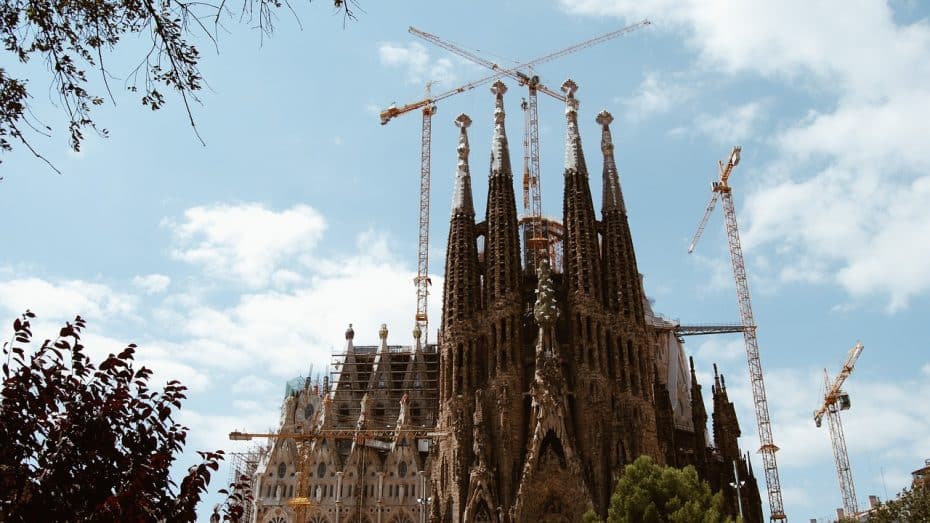
2. Gaudí Wasn’t the First Architect to Work on the Sagrada Familia
Although the Sagrada Familia is undoubtedly Gaudí’s masterpiece, he was not the first architect assigned to the project.
The first architect to work on this iconic Barcelona landmark was Francisco de Paula del Villar y Lozano. The original plan for the building was to have a neo-Gothic design. However, Villar would quit, and a 32-year-old Gaudí, who assisted Villar in other projects, would take over.
3. The Sagrada Familia is a UNESCO World Heritage Site
Another Sagrada Familia fun fact is that the part that Gaudí was able to complete while he was alive is a UNESCO World Heritage Site. Specifically, the Nativity Facade and the Crypt of the Basílica granted the church this status in 1984.
The Sagrada Familia is, with Park Güell and Casa Milà, listed on the UNESCO World Heritage List as the “Works of Antoni Gaudí.”
4. There Aren’t Straight Lines In the Sagrada Familia
Gaudí is the most famous representative of Modernismo, the Catalan equivalent of Art Nouveau. This architectural style draws most of its inspiration from nature and its forms so that you won’t find any straight lines in his works. The architect, who was, as anyone could guess, a very religious man, famously said, “Straight lines belong to men; curved lines belong to God.”
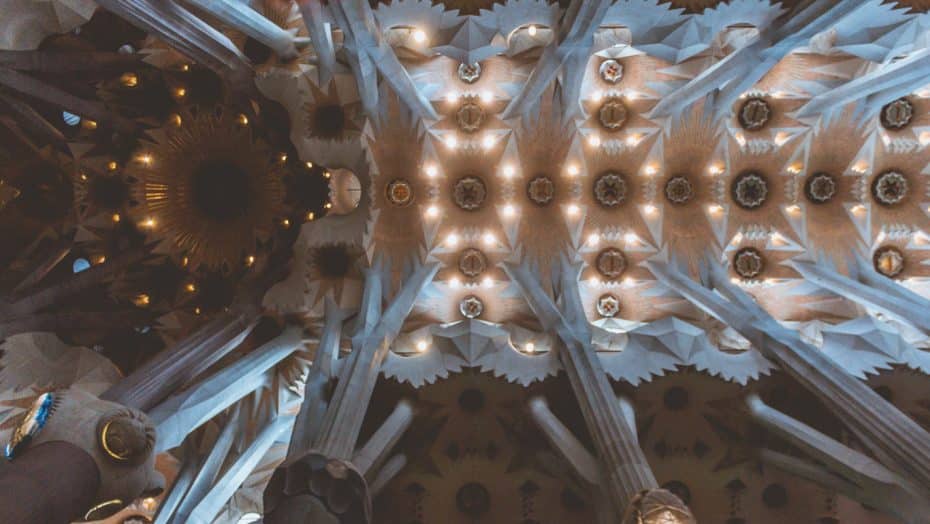
5. There Was Nothing in the Sagrada Familia Area
Although it may be hard to imagine now, the area surrounding the Sagrada Familia was empty before the construction began. The then-deserted site is now part of the Eixample, one of the best neighborhoods to stay in Barcelona. It’s also curious that this religious landmark is in one of the city’s nightlife areas.
6. The Money to Build the Sagrada Familia Comes from Donations
If you buy tickets to visit the Sagrada Familia, you’ll notice several stained glass windows with different names. These names belong to important Catalan families and religious people who donated to support this cathedral’s construction. There is a higher group of names that belong to saints and apostles.
Likewise, a percentage of the money made with ticket sales also contributes to the completion of the project.
7. The Sagrada Familia Will Be the Tallest Church in the World
Another Sagrada Familia fun fact is that, after the completion of the Jesus Christ spire, it will be the tallest church worldwide.
The tallest church record is the Ulm Minster in Germany, which reaches 161.5 meters (529.9 ft) at its highest point. The Sagrada Familia’s Jesus Christ spire will surpass that height by 11 meters (36.1 ft).
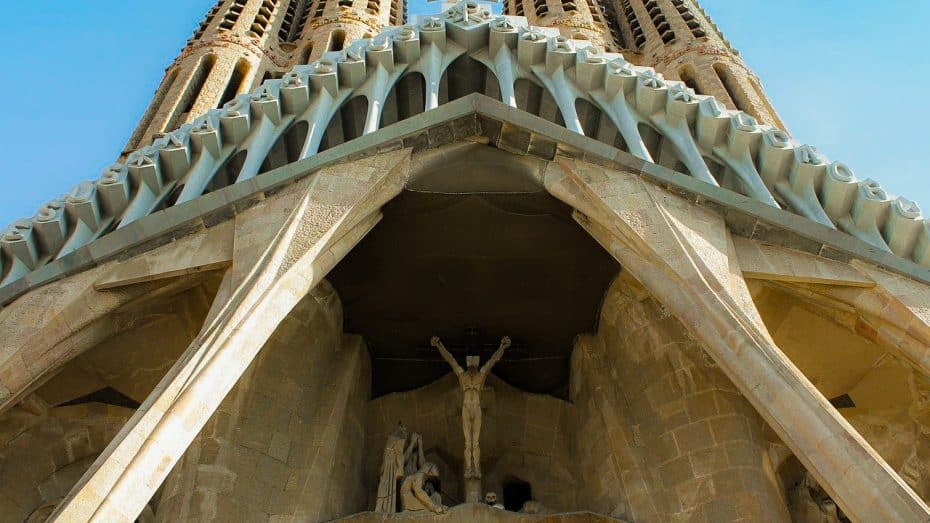
8. Gaudí’s Remains Are in the Sagrada Familia
Considering it is the most notorious part of his legacy, it’s unsurprising that Antoni Gaudi’s remains are in the Sagrada Familia. In the crypt, below the apse of the Basilic, you’ll find the architect’s burial site, which you can also visit. Gaudí died on 10 June 1926, when he was 73 years old.
9. Gaudí Left Detailed Plans to Complete the Building
Gaudí knew his ambitious project would take time and often replied to people questioning him that he was in no rush. So, before passing away, he left detailed plans, instructions, and drawings showcasing his vision for the church. This way, whoever was to continue his work could do so quickly.
10. The Plans for the Building Were Burned During the Spanish Civil War
Sadly, despite Gaudí’s best efforts to be cautious, the plans and instructions to complete the Sagrada Familia got lost during the Spanish Civil War. To be exact, the planes were burned and destroyed in July 1936 by anarchists who set fire to the crypt.
Eventually, the project continued based on reconstructions of the plans. These reconstructions were, of course, supervised by other architects, which takes us to…
11. Nine Architects Have Been in Charge of the Building’s Construction
After Gaudí died in 1926, seven other architects took over the project. Hence, counting Gaudí and Villar, who preceded him, nine architects had the Sagrada Familia in their portfolios at some point.
Currently, the director architect of the project is Jordi Faulí i Oller.
12. The Project Uses the Latest Technology
The construction of the Sagrada Familia is the perfect example of adopting the latest technologies to complete long, massive projects. Over the years, the team behind the building welcomed different approaches to finish the reconstruction of Gaudí’s original plans as faithfully as possible, including the most recent 3D printing technologies. There are rooms in the Sagrada Familia dedicated to the evolution of the project.
13. The Sagrada Familia Will Be the Tallest Building in Barcelona
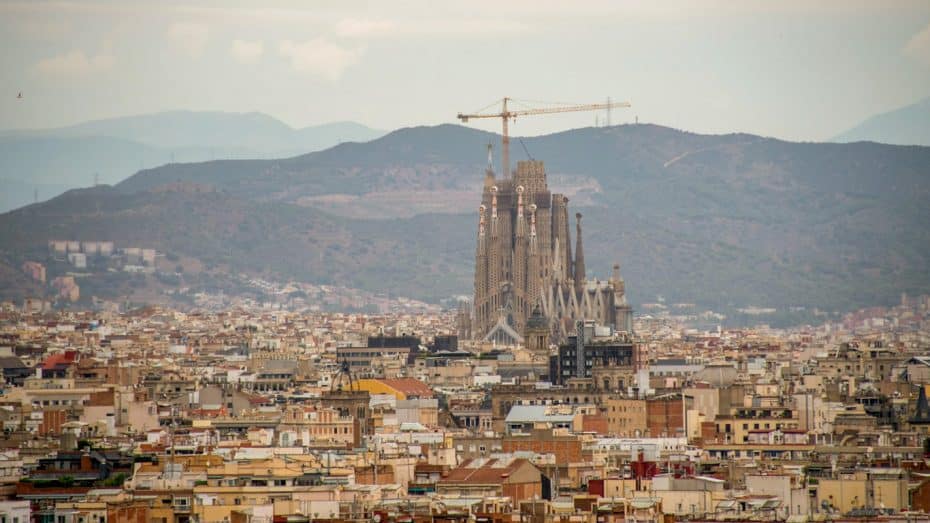
With the completion of the previously mentioned Jesus Christ spire, the Sagrada Familia will also take the title of the tallest building in Barcelona. The church will reach 172 meters (564 ft), surpassing the current tie between Hotel de las Artes and Torre Mapfre, both 154 meters (505 ft) high.
14. There’s a “Sudoku” in the Sagrada Familia
Of course, no list of Sagrada Familia fun facts would be complete without addressing the “Sudoku” you can find it on one of its sides. Many people overlook this detail on the temple’s Passion Facade, but it is fascinating.
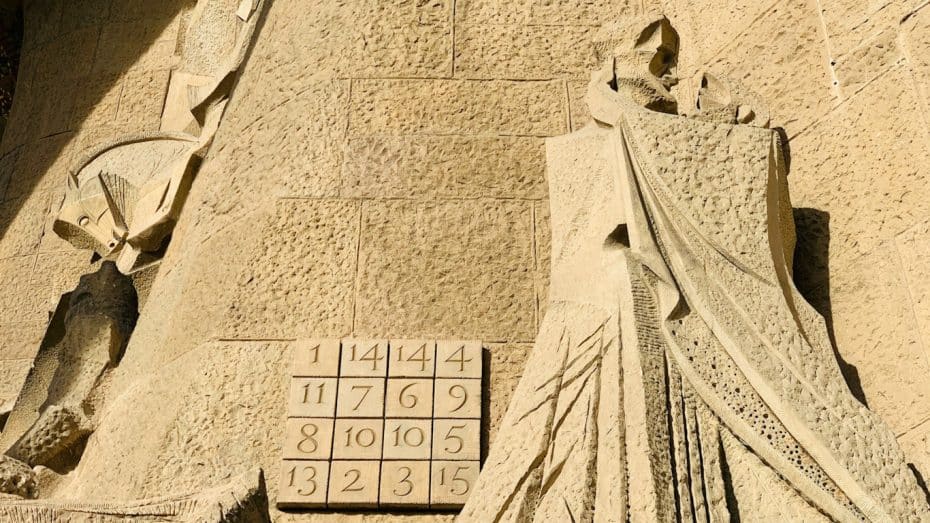
Although not really a Sudoku, there’s a square with 16 boxes, each with a number. But what’s more interesting is that if you add the numbers horizontally, vertically, or diagonally, the result will be the same: 33. And why 33? Because that’s the age of Christ. Mic drop.
15. Real People Modeled for the Sculptures
Something striking when you visit the Sagrada Familia for the first time is how realistic some of the sculptures are, and there’s a reason why. Real people model for several of the sculptures you’ll find in the Nativity Facade.
Gaudí would take photos and make plaster molds of people after he decided on the position or poses he wanted the sculptures to have. Before this, the architect also took Anatomy classes to learn more about the human body.
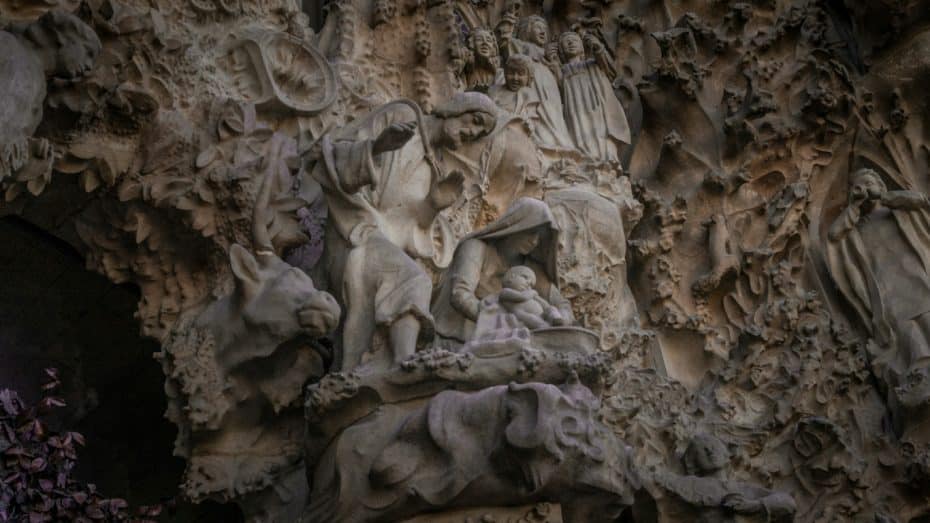
16. There’s a Sculpture with Gaudí’s Face
In the Passion Facade, you’ll find the sculpture of an evangelist molded after Gaudí’s face. This sculpture is an homage to the architect since this part of the Sagrada Familia was completed after his death.
17. There Are 18 Towers in the Sagrada Familia
Another fun fact about the Sagrada Familia is that it purposely features 18 towers. These towers have different heights and represent various things. There are 12 towers for the apostles, four taller ones for the evangelists, and the two tallest ones for the Virgin Mary and Christ.
18. Many Types of Stones Were Used for the Building
Initially, the stones used to build the Sagrada Familia came from the Montjuïc mountain, one of the main attractions in Barcelona. However, over the years, the stone, which was perfect in terms of durability, became scarce. Hence, the people in charge of the project started researching and searching for a suitable replacement worldwide.
This search led to the use of 70 types of stones and rocks to build the Sagrada Familia. After all, it takes work to find a stone that can successfully carry this monument’s weight and do it responsibly and sustainably.
19. The Sagrada Familia Is Not Barcelona’s Main Cathedral
Considering how many people visit this temple and how iconic it is, you may think it was the principal cathedral in Barcelona. Yet, there’s a beautiful, Gothic-style church in the Barri Gòtic, the city’s Gothic district, in the heart of Barcelona.
The cathedral is another mandatory stop during a first trip to Barcelona.
20. The Sagrada Familia Is a Working Church With Special Services
The Sagrada Familia also offers church services in different languages. To access Sunday mass in this temple, you must go through a separate entrance through the Nativity Facade.
21. The Stained Glass Windows Have Different Colors
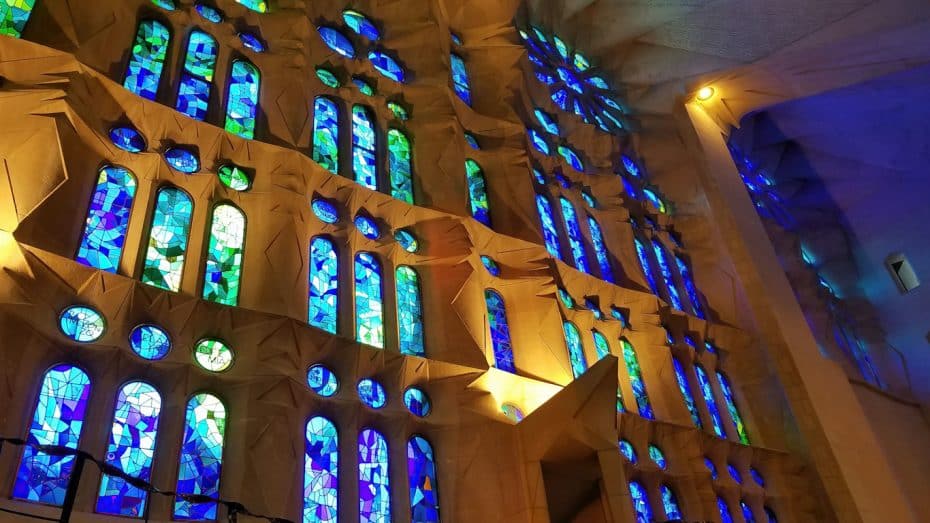
Finally, another fun fact about the Sagrada Familia is that the stained glass windows inside have different colors. The ones on the Nativity Facade, which overlook the east, have colder shades of green and blue to represent the gentle light of sunrise. Meanwhile, the west windows on the Passion Facade have warmer red and orange colors to depict the sunset.



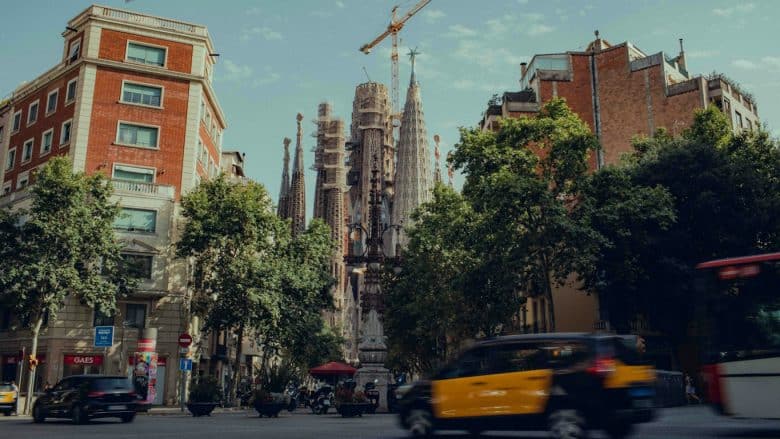
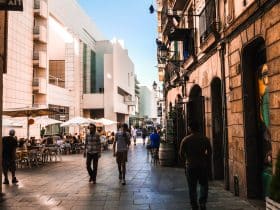
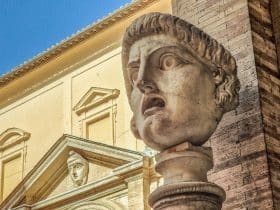
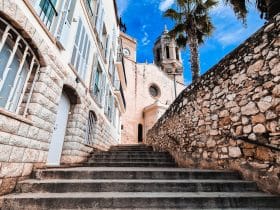
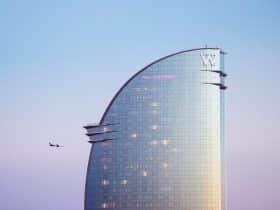




















Leave a Reply
View Comments